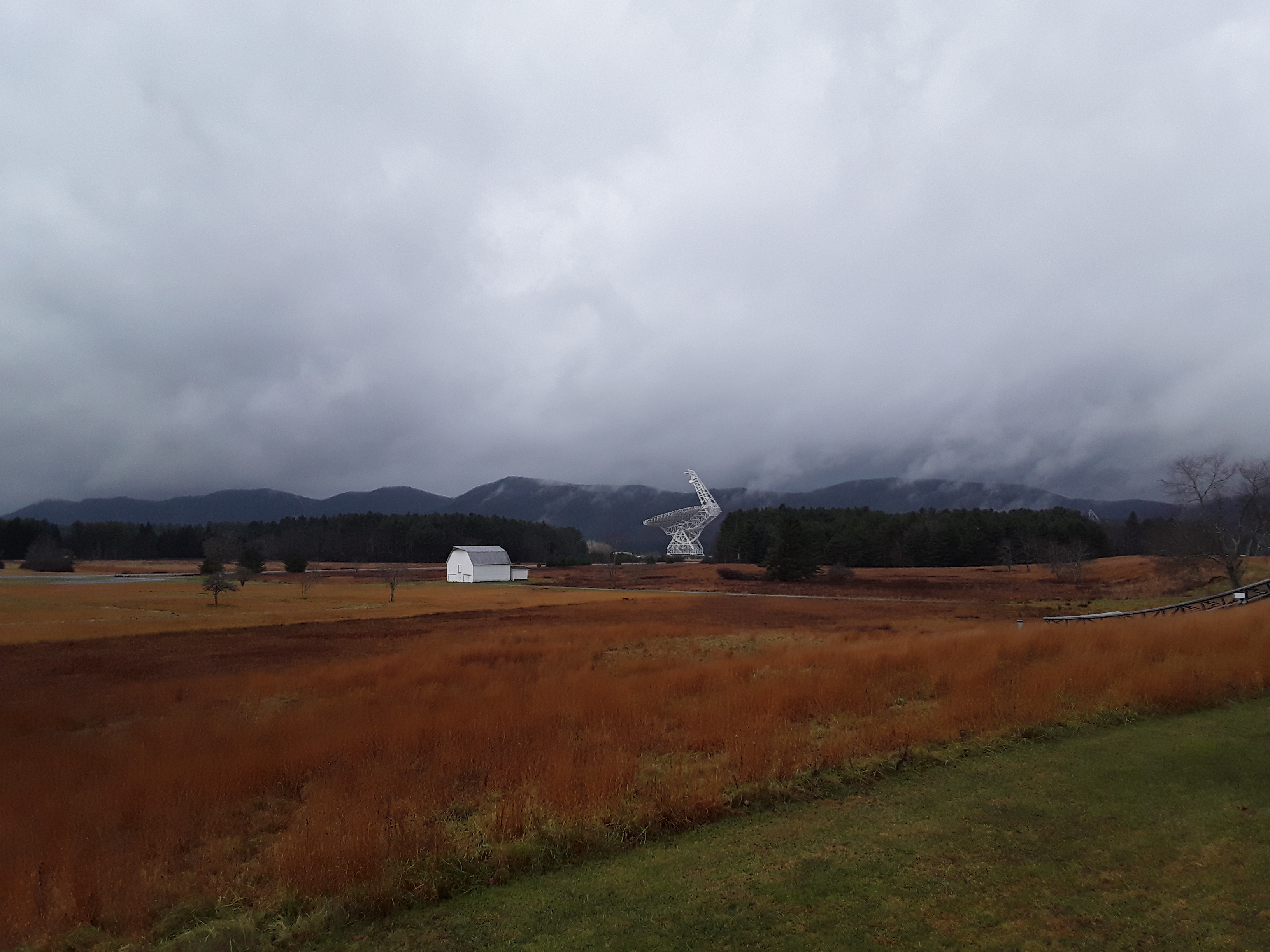Green Bank Observes the Unseen Forces of Our Universe and Searches for Extraterrestrial Life


The Green Bank Science Center is open to visitors year-round. It houses a world-class astronomy facility (the Green Bank Observatory) whose telescopes are used by scientists around the world to observe and record radio waves throughout the universe. Astronomers use the telescopes at Green Bank to observe celestial phenomena like black holes, supernovas, pulsars, and cosmic background radiation, all by detecting the part of the invisible portion of the electromagnetic spectrum known as radio waves. The facility listens for radio waves from natural sources, as well as from artificial sources as part of the Search for Extraterrestrial Intelligence (SETI).

The Green Bank Observatory opened in 1957 as the National Radio Astronomy Observatory. It changed its name to the Green Bank Observatory in 2016, and celebrated its 60th anniversary last year in 2017. The unincorporated community of Green Bank was the perfect location to build the facility for two reasons. The surrounding Allegheny Mountains create a natural barrier to radio interference and dangerous weather like tornadoes, and the local population is so low that there is an even smaller chance of interference. At 9.3 people per square mile, it’s one of the least-densely populated places east of the Mississippi.
If you’ve ever been to Green Bank or Pocahontas County you know that it’s hard to find a cell phone signal. That’s because it’s in the middle of the National Radio Quiet Zone, which limits the use of electronic devices. It was established by Congress in 1958. The NRQZ covers 13,00 square miles in Virginia and West Virginia, and also includes a former Naval observatory in nearby Sugar Grove. Green Bank is also located within the West Virginia Radio Astronomy Zoning Act, which limits the use of all electronics (including appliances like microwaves) within ten miles. Some people even choose to live near Green Bank because there is so little electromagnetic radiation.

The National Radio Quiet Zone (from greenbankobservatory.org)
Why is minimizing interference such an issue? Interference from artificial sources is a billion times stronger than the signals the Observatory is searching for. To help decrease the amount of interference on site, the Observatory keeps all electronic devices inside a Faraday cage, a device used to block electromagnetic signals. The observatory’s control room and the Science Center’s exhibit hall are completely surrounded by copper Faraday cages. The exhibit hall itself is a large anechoic chamber which means it absorbs all sound as well as electromagnetic waves. Devices like cell phones and digital cameras have to be turned off during the tour, and only diesel engines are used on the premises because spark plugs interfere with radio signals. Even the lawnmowers are diesel!

Green Bank is home to six telescopes, six of which are currently operational. They range from as small as 14 meters to 100 meters in diameter. At 485 feet tall, the Robert C. Byrd Green Bank Telescope is the tallest at the Observatory and the largest steerable radio telescope in the world. It’s so large that it takes about nine minutes to rotate the base a full 360 degrees. Its dish measure 100 meters by 100 meters, or over 2.3 acres, which can easily fit two whole football fields. Other telescope include the 140ft telescope, which contains the world’s largest steel ball bearing!

This is as close as you can get to the GBT with a camera. All cell phones and digital cameras must be turned off during the tour!
Green Bank has discovered a lot about the Universe, and was used to discover the supermassive black hole at the center of the Milky Way, called Sagittarius A*. The Observatory operates 24/7, 362 days a year. The GBT is used by scientists at NASA, around the country, and even from other countries. Green Bank has been responsible for many firsts in radio astronomy, including the first SETI experiment in 1960 by Frank Drake. Today the Observatory continues to take part in SETI projects including Project Breakthrough. Recently the Observatory was pointed at Mars to view NASA’s new InSight lander.
Learn more or plan your visit at greenbankobservatory.org


The exhibit hall in the science center has hands-on activities displays about radio waves, the electromagnetic spectrum, and celestial bodies
